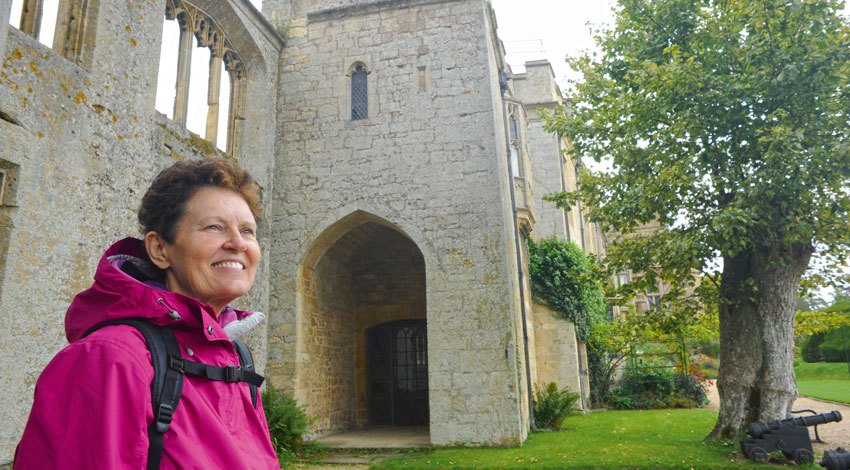Welcome to the Cotswolds: A ‘Picture-Perfect Postcard of Britain’
Rolling green meadows. Thatched-roof cottages. Honey-hued limestone.
Welcome to the Cotswolds, an idyllic area of south central England where history unfolds at every picturesque turn. Encompassing five counties, the Cotswolds’ unspoiled rural landscape is dotted with quaint villages, ancient mansions, historic churches and gentle hills perfect for exploring on foot and by bike.

“The Cotswolds is such a special region,” said Dawn Kelly, director of Road Scholar programs in Road Scholar’s Canterbury, UK, office. “It’s a picture-perfect postcard of Britain that harkens back to a simpler age with its thatched cottages, rolling countryside, cozy pubs and more.”
Here, you’ll find both natural splendor and manmade architectural marvels, plus culture and history galore. Spreading across approximately 800 square miles, the Cotswolds were designated as an Area of Outstanding Natural Beauty (AONB) in 1966. Today, the area is the largest AONB in England and Wales.
Mention the Cotswolds and post-card perfect images come to mind — lilacs tumbling over stately stone garden walls, bike trails stretching through bucolic meadows and quaint village markets overflowing with local produce. This quintessentially English region is also world-renown for its historic castles, stately homes and distinctive golden-hued Cotswold stone.
Describing Cotswolds stone, the twentieth century writer J. B. Priestley wrote: “The truth is that it has no colour that can be described. Even when the sun is obscured and the light is cold, these walls are still faintly warm and luminous, as if they knew the trick of keeping the lost sunlight of centuries glimmering about them.”
The unique yellow color of the stone buildings here comes from Oolithic Limestone, formed during the Jurassic period, up to 200 million years ago, when the whole Cotswolds area was beneath the sea.
In addition to quarries, the Cotswolds traces its heritage back to its booming medieval wool trade. Affluence from that period can be seen today in the spectacular manor houses and grand churches built by wealthy textile merchants. Many of these impressive structures were also constructed for royalty, including the Prince of Wales’ Highgrove Estate.
An adventure here can include walking, biking, perusing antique shops, strolling through world-famous gardens, and of course, learning at historic and cultural sites.
One more must-do? Take some time to enjoy a spot of tea along with freshly baked scones.

Top 3 Ways to Learn in the Cotswolds With Road Scholar
#1. “Walking the English Countryside: The Cotswolds and Cornwall” (Program #18730)
Learn about local history while exploring by foot with experts on this small group walking and hiking adventure.
#2. “The Game is Afoot! The English Murder Mystery Tradition on the Queen Mary 2” (Program #21870)
Learn about British detective novels, the villages that inspired them and real-life London murders on this high seas literary adventure.
#3. “The Spirit of Oxford” (Program #20703)
Walk in the footsteps of literary giants, including J.R.R. Tolkien, C.S. Lewis, Lewis Carroll and more. Venture outside Oxford to explore the picturesque Cotswolds countryside.
